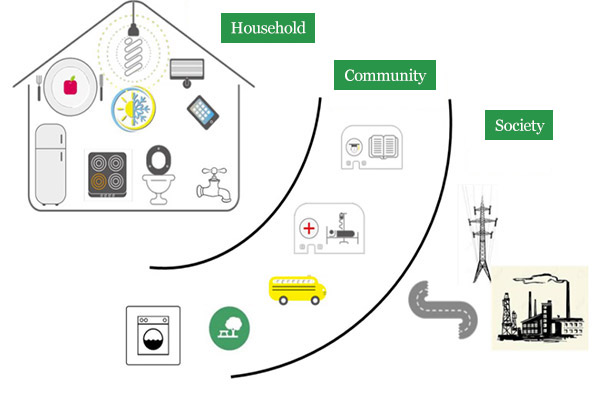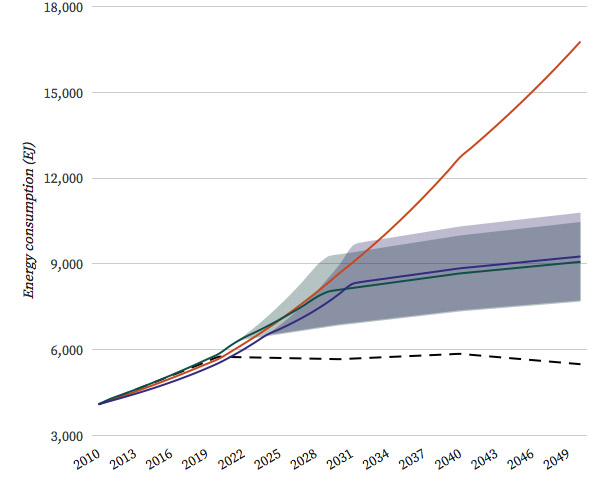Decent Living Standard

Current measures of human development, such the Human Development Index (income, life expectancy, literacy), or the Multidimensional Poverty Index (MPI) inadequately measure the extent of human deprivation, particularly with regard to the means that enable basic human well-being. These requirements need to available and affordable to all.
We propose a Decent Living Standard, which entails material requirements at the household, community and national scale. Find out the requirements for decent living by hovering over each component on the graphic.
For more details on the rationale for these standards see:
Rao N & Min J (2017). Decent Living Standards: material prerequisites for human wellbeing. IIASA Working Paper. IIASA, Laxenburg, Austria: WP-17-005.
Figure 1. Decent Living Material Preconditions. Hover over the symbols to get additional information.
Gaps in Decent Living

Each specific country shows specific gaps in its progress towards 100% Decent Living.
Each country will require a different amount of energy to reach 100% in all different Decent Living requirements.
Search for a country above to see its gaps in decent living.
Figure 2. Example chart (India 2011).
Please note: data not available for all indicators for all countries/years.
Energy requirements for Decent Living

Energy charts are available for Brazil and India.
Buildout energy: initially, to build out the infrastructure for basic services.
Maintenance energy: annually, to deliver these services and maintain infrastructure.
Health: Food production to support healthy diets and health care services
Living conditions: Durable shelter, utilities, refrigerators, clean stoves, basic comfort (lighting, heating/cooling)
Mobility: Vehicles and transport infrastructure
Education: Education expenditure
Information & communication: TVs, cell phones
Figure 3. Example charts (India).
Emissions projections

Emissions charts are available for India.
Projections of emissions associated with human progress based on different indicators, based on the historical relationship between energy growth and each development indicator, allowing for technology-driven efficiency improvements.
It shows that achieving human development is likely to be less carbon-intensive than overall economic growth in the long-term, but we still need more growth to achieve a decent standard of human development.
Figure 4. Example chart (India).

